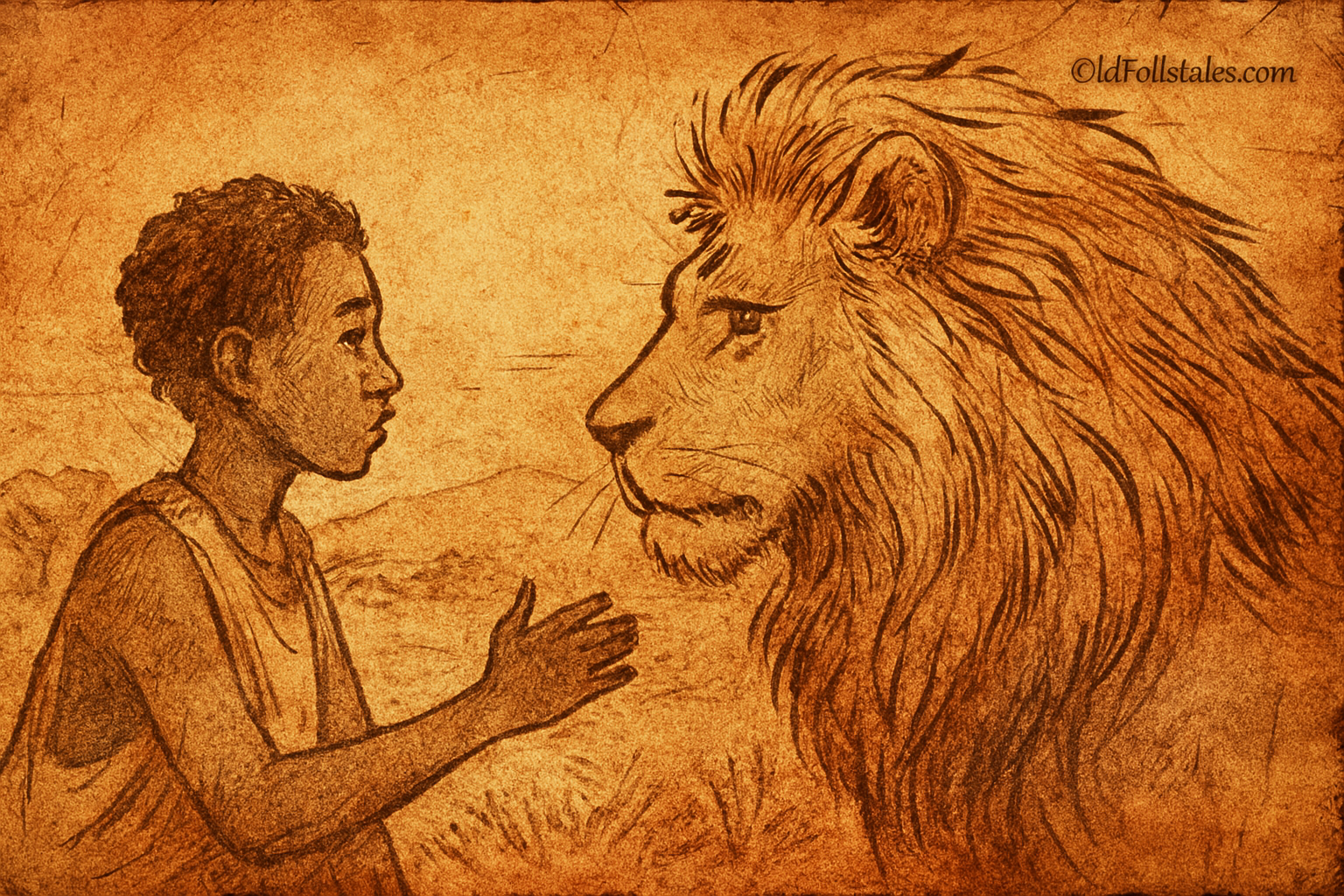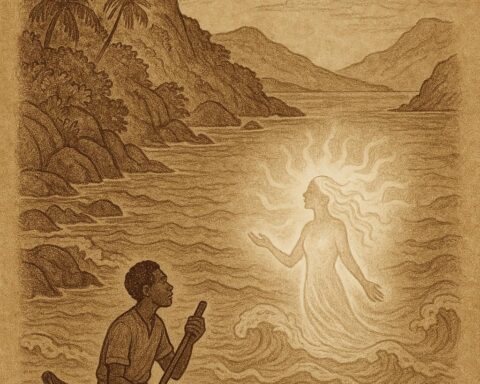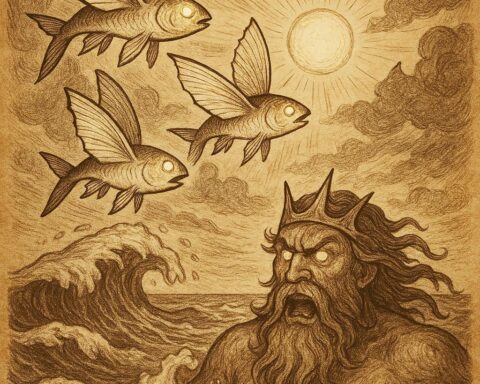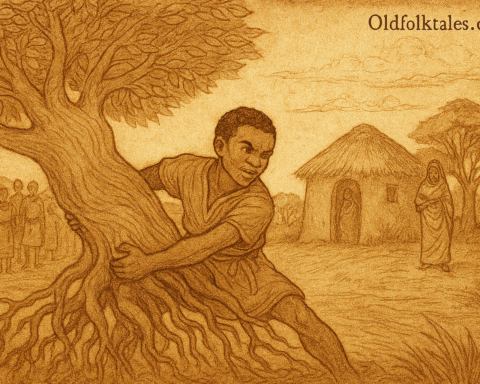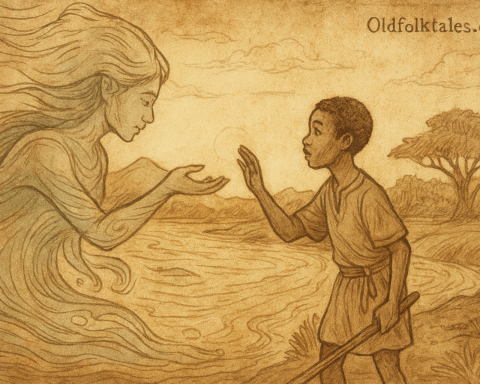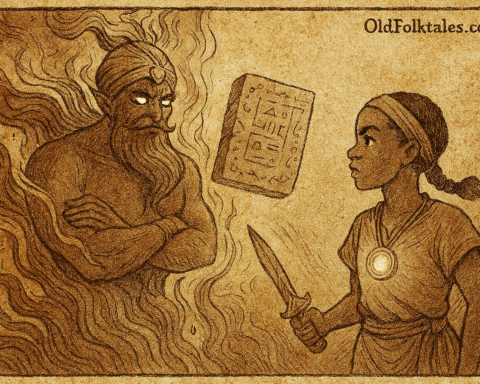Bamako, a vibrant city that pulses with the rhythmic beating of djembe drums and the life giving waters of the Niger River, is a place where ancient legends seamlessly meet modern life. Beneath the golden sun of Mali, this bustling capital hides stories as old as the surrounding hills themselves. One such story belongs to a boy named Kélé and his remarkable journey to become known as the “Lion King of Bamako.” It is a powerful tale of bravery, sacrifice, and the unbreakable bond between a boy, a lion, and the city they both called home.
The streets of Bamako were constantly alive with activity. Vendors shouted enthusiastically over one another, selling fresh mangoes, handmade jewelry, and colorful textiles that gleamed brilliantly under the midday sun. Kélé, just fourteen years old, darted skillfully through the crowds with a basket of fish balanced expertly on his head. The energetic boy had enthusiasm to rival the markets themselves, and his infectious laughter rang out as he weaved effortlessly through the chaos.
Kélé wasn’t like the other boys in his neighborhood. While they played games or helped their fathers work in the fields, Kélé spent countless hours by the Niger River, watching the way it flowed: strong, steady, and unyielding. His mother often scolded him for daydreaming, but Kélé couldn’t help himself. He was searching for something greater, though he didn’t yet know what it was.
Also read: Amina and the Djinn
That search began to take shape one afternoon when he overheard the village elders at the market. They whispered in hushed tones about a lion, majestic and golden maned, spotted near the outskirts of Bamako. “A sign,” one of them murmured gravely. “A blessing, or perhaps a warning.”
The mention of the lion ignited Kélé’s imagination like fire to dry grass. That night, he couldn’t sleep. He lay awake, staring at the thatched roof of his family’s hut, wondering what it would be like to stand face to face with such a magnificent creature. The idea thrilled and terrified him in equal measure.
Dawn broke over Bamako, and with it came the irresistible call of adventure. Kélé rose quietly, careful not to wake his sleeping parents. Armed with only a worn walking stick and a small bag of millet cakes, he slipped into the bush beyond the city. His heart raced with anticipation as he followed the path out of Bamako, the familiar sounds of the city gradually fading behind him.
The hours dragged on under the hot sun, but Kélé pressed forward with determination. He traced fresh paw prints in the dirt and listened carefully for the rustle of tall grasses. As the sun began to dip low in the sky, painting everything golden, he found himself standing on a rocky hill. There, bathed in the glorious light of dusk, was the lion.
Kélé froze completely. The lion was larger than he had imagined, its magnificent mane shimmering like liquid fire. Its eyes, deep amber pools of ancient wisdom, met his, and for a breathless moment, time seemed to stop. Fear gripped him tightly, but so did something else: pure awe.
Before he could react, angry shouts broke the stillness. A group of hunters emerged from the brush, their bows drawn and arrows ready. Panic surged through Kélé as he realized their deadly intention. Without thinking, acting purely on instinct, he stepped between the hunters and the lion, raising his arms wide.
“Stop!” he shouted, his voice cracking with emotion. “It’s not attacking anyone! Let it go!”
The hunters hesitated, their eyes flicking uncertainly between the brave boy and the beast. The lion, sensing its chance for escape, disappeared into the shadows. Kélé stood trembling, his heart pounding like a ceremonial drum. He had saved the lion, but he knew this was only the beginning.
Word of Kélé’s daring act spread quickly through Bamako. In the crowded streets, people whispered about the boy who had stood before a lion and lived to tell the tale. Some called him brave; others, foolish. The village elders, however, took a keen interest.
One elder, Amadou, summoned Kélé to his hut. The old man’s voice was rough, like the bark of a baobab tree, but his eyes were kind and knowing. “The lion spared you,” he said. “Do you know why?”
Kélé shook his head.
“Lions don’t trust easily,” Amadou continued. “But when they do, their loyalty is unmatched. You are bound to it now, Kélé. Protect it, and it will protect you.”
The boy didn’t fully understand the elder’s words, but they stayed with him. Over the following weeks, he returned to the hills, searching for the lion. Each time, he brought offerings: fish, goat meat, even water from the river. Slowly, the lion began to trust him.
Kélé named the lion “Fari,” which meant “king.” They formed an unlikely partnership, the boy and the beast. Fari seemed to understand Kélé’s words, and Kélé, in turn, learned to read the lion’s movements. It was as though they shared a language all their own.
Not everyone in Bamako was as accepting of the lion as Kélé was. Reports of missing livestock began to circulate, and though no one could prove Fari was responsible, fear spread like wildfire. Traders passing through the city muttered about cursed lions, and some villagers demanded action.
A meeting was called in the central square. The elders debated for hours, their voices rising in heated argument. Finally, Amadou stood and addressed the crowd.
“Kélé,” he said, beckoning the boy forward. “This lion of yours has brought both hope and fear to our people. If you wish to protect it, you must prove it is a blessing and not a curse.”
Kélé nodded solemnly. “I will,” he said, though his voice trembled. He didn’t know how, but he was determined to keep his promise.
Not long after the meeting, disaster struck Bamako. The rains failed, and the land began to wither under the relentless sun. Crops dried up, and the Niger River shrank to a fraction of its size. Desperation took hold of Bamako, and with it came more accusations.
“It’s the lion!” some shouted. “It has angered the spirits!”
Kélé refused to believe it. He spent his days searching desperately for water, following the paths Fari showed him. One evening, deep in the hills, Fari led him to a hidden spring. The water was cool and clear, a precious lifeline for the struggling village.
Kélé returned to Bamako with the news, but convincing the villagers to trust him and the lion was no easy task. The elders agreed to let Kélé lead a group to the spring, but their skepticism was obvious. “If you fail,” Amadou warned, “there will be no saving the lion.”
The journey was treacherous. The group faced blistering heat, venomous creatures, and exhaustion. Fari walked alongside them, his presence both comforting and intimidating. Some villagers grumbled about trusting a beast, but Kélé reminded them of their goal.
After three long days, they reached the spring. The sight of the water brought cheers and tears. Kélé watched as the villagers drank their fill, their faith in him and Fari restored.
With the water from the spring, Bamako survived the drought. The villagers began to see Fari not as a threat, but as a symbol of resilience and divine blessing. They built a small shrine near the spring, dedicating it to the lion and the boy who had saved them.
Kélé grew into a wise man, but he never forgot the lessons he learned from Fari. Though the lion eventually left the hills, its presence was felt in the stories and songs of Bamako. Kélé became a respected leader, guiding his people with the same courage and wisdom he had shown as a boy.
Today, the tale of the Lion King of Bamako lives on, passed down through generations.
The Moral Lesson
This inspiring Bamako folktale teaches us that true courage means standing up for what is right, even when others are filled with fear and doubt. Kélé’s story reminds us that understanding and compassion can bridge the gap between the wild and the civilized, and that leadership requires both bravery and wisdom. The tale emphasizes that judging others based on fear rather than truth leads to injustice, and that those willing to see beyond appearances can discover unexpected allies and solutions to seemingly impossible problems.
Knowledge Check
Q1: Who was Kélé in this Bamako folktale from Mali? A: Kélé was a fourteen year old boy from Bamako who formed an extraordinary bond with a lion he named Fari. He saved the lion from hunters, earned its trust through patience and offerings, and eventually led his people to a hidden spring during a devastating drought, becoming a respected leader known as the Lion King of Bamako.
Q2: What role did the lion Fari play in this Mali legend? A: Fari, whose name means “king,” was the majestic lion that formed a bond with Kélé. The lion served as both a test of the village’s fears and prejudices and as a guide who led Kélé to the hidden spring that saved Bamako during the drought. Fari symbolized the power of trust between humans and nature.
Q3: What was the significance of the drought in the story? A: The drought represented a crisis that tested both Kélé’s bond with Fari and the village’s willingness to trust. It forced the people of Bamako to choose between their fear of the lion and their need for survival, ultimately proving that Fari was a blessing rather than a curse when he led them to water.
Q4: Who was Elder Amadou and what was his role in this West African tale? A: Elder Amadou was a wise village elder who recognized the special bond between Kélé and the lion. He served as a mentor figure who explained that lions, when they trust, offer unmatched loyalty. He also gave Kélé the chance to prove the lion was a blessing by leading the village to the hidden spring.
Q5: What does this folktale teach about the relationship between humans and nature? A: The story teaches that nature, represented by the lion Fari, can be an ally rather than an enemy when approached with respect and understanding. It emphasizes that fear and prejudice blind us to potential solutions, while courage and compassion can reveal unexpected partnerships that benefit entire communities.
Q6: How does Kélé represent leadership qualities in Malian tradition? A: Kélé embodies the ideal leader in West African tradition: someone who acts with courage despite fear, shows compassion for all creatures, earns trust through consistent actions, and uses wisdom to guide others through crisis. His willingness to stand against the crowd for what he believed was right demonstrates true leadership.
Source: Bamako oral tradition, Mali, West Africa
